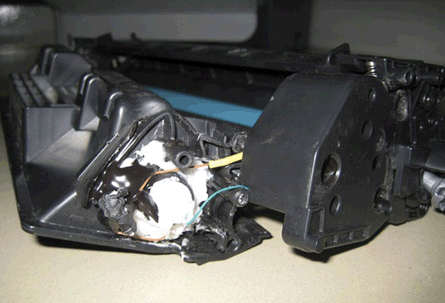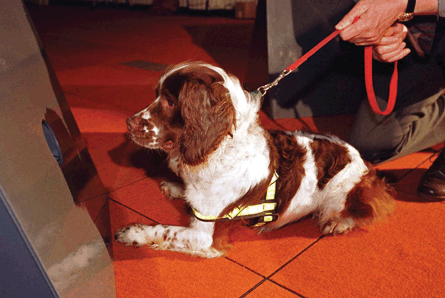Intelligence must be at the root of any effective cargo security regime, but there is a need for certificated systems capable of screening whole cargo pallets and large items.
That is the view of the International Air Transport Association, which on 2 November opened its security-focused AVSEC World conference in Frankfurt - just days after intelligence-led security checks on a UPS aircraft in the UK and a FedEx Express facility in Dubai uncovered PETN explosives in packages originating in Yemen.
 |
|---|
© Gavin Rodgers/Rex FeaturesTwo packages containing plastic explosives were found |
The message from providers of screening systems, meanwhile, is that the technologies required to ensure cargo security are available, and what is lacking is a global standard to govern their use. Yet IATA's view on the primacy of intelligence appears to be a point of consensus.
E-FREIGHT POTENTIAL
In his address to AVSEC World, IATA director general Giovanni Bisignani argued that cargo security required co-operation between governments and industry in investment, processes, technology and risk assessment. For example, the association sees potential for its e-freight programme - a paperless documentation system launched as a cargo analogue of its e-ticketing initiative - to generate data that could be used to manage security "intelligently and efficiently without compromising speed".
Industry's role is not confined to airlines, stresses Bisignani. "The entire supply chain from the manufacturer to the airport has a responsibility to secure shipments," he says. He sees the UK and USA as "well advanced on supply-chain solutions", with the former nation operating a regulated agent system and the latter a certificated cargo-screening programme, in which responsibilities are split between shippers, forwarders and manufacturers. IATA aims to "help all governments develop a similar approach".
Bemoaning the lack of certificated systems for screening standard-size pallets and large items, Bisignani notes: "There is some promising technology, but it's taking far too long to move from the laboratory to the airports." Nevertheless, he sees scanning technology as complementary to intelligence, rather than as a first line of defence.
The idea that 100% scanning is not the solution to cargo security is taken up by advocacy group Shippers' Voice. "The most effective way to detect and deter anyone intending to use air freight to carry out an attack is through intelligence," says managing partner Andrew Traill.
 |
|---|
Sniffer dogs are used to test air samples for suspicious substances |
No single technology could cover all aspects of air cargo, in the view of Smiths Detection's vice-president of sales Bernhard Semling; rather, a set of technologies should be deployed in a "multilayered approach" - again, with intelligence at the core.
In this model, screening technologies are the next layer of security. Here, air cargo's lack of homogeneity creates a need for a mix of systems, with some items - medicine, frozen foods, flowers - unsuited to X-ray screening.
Conventional X-ray screening can be used to determine material groups and identify suspect areas, which can then be probed with trace or particle detection technologies, as explosive materials - of which PETN is part of the "standard set", says Semling - are characterised by stickiness and a tendency to vapourise.
Explosive detection systems (EDS) represent an additional layer of technology, and have been in use in aviation since the Lockerbie bombing brought a requirement for 100% screening of check-in baggage on passenger jets.
Such systems can be applied to freight screening and have indeed been sold to cargo companies, confirms Semling. Smiths Detection provides automatic EDS products that can handle packages with dimensions of up to 1,000 x 800mm (39 x 31.5in). For larger consignments, up to main deck pallets, it offers dual view imaging systems.
The sheer volume of cargo moved by air complicates application of EDS, as do logistical concerns. Speed is the basis of premiums charged by freight forwarders, who are therefore keen to avoid breaking down pallets to probe for explosives. In this context, Semling proposes that cargo could be screened earlier in the supply chain, before it is consolidated and dispatched to the airport.
With a range of technologies already in place, "what's missing is a clear international standard", he stresses, adding that a multilayered approach - with scope for variation of tactics, random re-inspections, and so on - would have the advantage of bringing "more unpredictability to the enemy". There is, however, "no silver bullet", he acknowledges.
Rapiscan Systems is similarly cautious to position its products as only part of the solution. "Scanning is one critical component to a comprehensive approach to air cargo security," it says.
Source: Flight International























